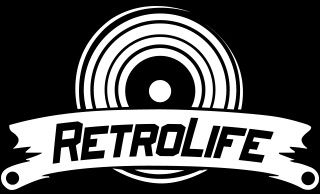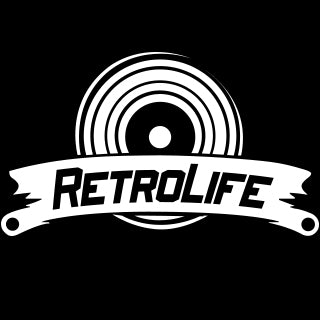Are you sure? You know that music has never been freer or easier to access in the history of the world, right? You do? Okay, just checking.
You’ve come to the right place. This guide is designed to help you decide what record players is best for a beginner and figure out if it’s worth diving into the hobby of vinyl collecting in the first place. Because simply put, it isn’t for everyone. To keep you from burning a cabinet-sized hole in your pocket for something you might never use, here are a few things you should know upfront:
It’s a Money Pit
Even without an amplifier, a pair of powered speakers and a turntable will set you back at least a few hundred dollars. From there, records themselves can range from $1 to an eye-watering $10,000, although most new vinyl falls in the $12-$30 range (Record Store Day exclusives notwithstanding). If the hobby takes hold, you can easily rack up several hundred more dollars in records over a year. Factor in accessories and occasional replacement parts, and you’re looking at a few months' rent.
Records Are Inconvenient
Aside from actually conducting a quartet, playing a record is the highest maintenance music medium there is. Taking out a record, cleaning it, and setting the stylus is your new double-click. Once it’s playing, you can’t set and forget it. Like a steak, you have to be on hand to flip it once the first side is done, or you’ll risk damaging it. If you’re the type of person who’s left the oven on and gone out for the night twice in a month, this is a serious consideration.
It Takes Up Space
If you have a small apartment or move every year, a stack of 40 records, a fragile turntable, speakers, and an amplifier might be more trouble than it’s worth. Especially if you’re buying used records, you’ll be surprised at how quickly you can amass an army of heavy, shelf-gobbling vinyl.
The Sound Quality is Theoretically Worse
Unless you’re willing to spend an ungodly amount of money on a high-end rig, a record will, in theory, sound worse than a “high quality” digital audio file. Vinyl records are generally inferior to CDs and lossless digital files in terms of reproducing the true sound of a recording. Vinyl sound quality is limited by one major factor: dynamic range. Dynamic range is the difference between the quietest and the loudest sound a medium can produce. A record’s dynamic range is limited physically by the size of its grooves, which can only be cut so wide before the stylus risks popping out. Digital audio does not have this limitation.
Why Buy Vinyl?
Technology has turned music into more of a utility than an art. Streaming services like YouTube, Spotify, and Pandora have made it seem like it’s rightfully free, a resource as intrinsically essential to humanity as water. There’s a beautiful idealism to that, removing the barrier to something as emotionally and spiritually fulfilling as music. The flip side is that freeing the song has changed our relationship with music. There’s so much of it available for so little that, like water, there’s a tendency to take it for granted.
The vinyl renaissance could be seen as a purposeful attempt to reinvest in the idea of music. Literally, you’re investing money in music, which makes you that much more likely to spend time with it. That’s not to say all albums merit close listening – Pitbull’s hollow exuberance might as well be made for grocery store speakers. But there are many albums deserving of more than two distracted minutes of your time.
The Point of Vinyl
It’s an important question. Records aren’t necessarily better on paper. Instead, the reasoning is abstract – it’s about ownership and sentimentality, ideas which digital storefronts have proven are understandably less of a concern than the price point for most folks.
If that sounds hokey, we get it. Again, vinyl isn’t for everyone, and sticking with digital music doesn’t make you any less of a music fan. But if you have the means and seek a deeper connection to music, a record collection isn’t a bad place to start.
Reemphasizing the Album Format
Records reemphasize the album format. Where playlist curation and track-by-track purchases have highlighted single songs, an LP encourages you to play an album front-to-back. In personal experience, records also compel you to appreciate the albums you buy to simply get value from your money. Buyer’s remorse is a powerful motivator.
Personalized Furniture
A record collection is personalized furniture. It gives music a physical presence in your life, which can enrich it in myriad little ways. When you have friends over, they’ll flip through your albums, ask you why you have two copies of Billy Joel’s “Piano Man” and none of “The Stranger.” You’ll pick out a weepy emo album from your middle school days and give you hell for it. When that friend moves away, maybe you’ll find that album, put it on and laugh about it.
Engaging Experience
Listening to a record is engaging. There’s a purposefulness in playing an LP that you don’t necessarily get by clicking on a track on your computer. The ritual – picking the album, sliding it onto the platter, cleaning it off, and setting the stylus – turns an otherwise thoughtless action into an event. And because you have to flip the damn things every 20-30 minutes, you don’t have the luxury of forgetting about them.
Recommendations for Your First Rig
You’ve heard the pros and cons and you’re still with us, bless your heart. Below, you’ll find our recommendations for turntables, speakers, and miscellaneous gear that you’ll want for your first rig. Note that we’ve left amplifiers out of the guide. Our reasoning is that with a set of powered speakers and a pre-amp (built-in or otherwise), they aren’t strictly necessary. More on that later. For now, let’s talk turntables.
Turntables
As you might guess, the turntable you choose is an important consideration. The good ones will treat your records right and make them sing.
The Retrolife R517 is an all-encompassing turntable designed for both novice and seasoned vinyl collectors. It combines traditional vinyl playback with modern Bluetooth technology, housed in a sleek and user-friendly design.
- Bluetooth Connectivity: This allows users to stream music wirelessly from their devices, providing versatility beyond vinyl records.
- Built-In Stereo Speakers: Delivers robust and immersive sound without the need for external speakers.
- S-Shape Tonearm: Designed to reduce tracking errors and provide smooth playback.
- ATN-3600L Cartridge: Offers a balanced and detailed sound profile, enhancing the listening experience.
- RCA Output: Allows for easy connection to external sound systems, amplifiers, and speakers.
- Excellent Material Quality: It not only looks elegant but also promises durability and longevity.
- Blends seamlessly with various home decor styles.
- Ease of Use: The turntable comes with clear instructions, enabling users to start enjoying their vinyl collection within minutes of unboxing.
- Premium Audio Performance: The built-in speakers are engineered to provide balanced audio, making every listening session enjoyable.
Essential Accessories
Like photography, record collecting is a hobby with an endless aisle of accessories. Similarly, some are essential and others are only for die-hard obsessives. Below, our list of extras that can help you get the most out of your music.
Record Brush and Cleaning Fluid
Cleaning your records with a brush and fluid before you play them is a habit that will add years onto their lives. Even with a dustcover, airborne dirt can find its way onto your record’s grooves, which register as loud pops when a stylus runs over them. Aside from the unwanted distraction, this can damage your record permanently, which is, like, a total bummer.
Turntable Mat
Less crucial is a sturdy turntable mat. Some turntables come with quality mats, but others stick you with a flimsy cloth mat. These mats generate static, which attracts dust. When hit by the stylus, dust causes clicks and pops and ultimately damage to your record. Anti-static, rubberized mats help minimize this. If you’re going to buy a turntable mat after the fact, it’s worth it to buy a heavier, static-resistant one to set your records on. We recommend one made of cork or thick rubber.
Cabinets
Cabinets are far from essential if you have a bookshelf, but storing your records properly is important. Record cabinets are designed to store your albums vertically, which prevents damage that can result from being stacked on top of one another. Depending on how fancy you want to get, you can get a simple container from Ikea or a sleek custom cabinet from a woodworker. Obviously, this is an aesthetic choice, and has no bearing on performance.
Tips for Prolonging the Life of Your Vinyl
- Always return your records to their sleeves after you’re done listening to them.
- Only handle records by their edges.
- Always keep the dust cover closed when a record is playing.
- Clean each side of your record before use.
- Don’t let your cat or your friends “scratch” your records.
How to Clean Vinyl Records
Place your record on the turntable and turn it on. While it’s spinning (but not playing), spray a small amount of cleaning solution onto your brush. Angle the brush so the front edge of it is in contact with the record. Let the record make a revolution and slowly pull the brush at an angle towards the outer edge of the record. Do this two or three times before you set the stylus.


